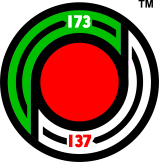≌ Disability Darts
≌ Wheelchair Darts
Disability / Wheelchair darts have become a mainstream sport for disabled dart throwers. The best have been featured on TV competing in sponsored events.
Like other sports, disability categories are involved. However, with a new regulation, dartboard height for wheelchair users, the sport has taken off worldwide.
Innovation in the sport of darts has changed slightly over the past 50 years, and the dartboard and manufacturers have led the innovation. The sport, as most know, is played in pubs and clubs across the world, but until recently, it hasn't been very user-friendly to any disabled player.
Disability comes in many forms, but the ability to stand unaided for some disabled players is either impossible or they are at a considerable disadvantage against an able player. However, Australian Russ Strobel has turned his attention to wheelchair users and wanted to make the sport that both disabled and able players could compete on an even level.
 In 2010, Russ submitted to Darts Australia a new recommended dartboard height for Wheelchair users. The height Russ has come up with is 137cm to the centre Bull. The height was based on the perceived origins of the standard clock dartboard's standard hanging height. It is said the average height of a man in the 1920s was 5'8" (average height of an Englishman). This height statistic was used to hang dartboards in pubs and clubs. The measurement of 5' 8" has been used to hang dartboards until the UK entered the common European market. At this stage, official dartboard measurements are made using the metric equivalent.
In 2010, Russ submitted to Darts Australia a new recommended dartboard height for Wheelchair users. The height Russ has come up with is 137cm to the centre Bull. The height was based on the perceived origins of the standard clock dartboard's standard hanging height. It is said the average height of a man in the 1920s was 5'8" (average height of an Englishman). This height statistic was used to hang dartboards in pubs and clubs. The measurement of 5' 8" has been used to hang dartboards until the UK entered the common European market. At this stage, official dartboard measurements are made using the metric equivalent.
The 5'8" height from the floor to the centre bull became 1.73M / 173cm. Russ took this analogy and worked out the height of a man of 5'8" (173cm) sitting in a wheelchair. His exact figure came out to be 136.5cm; however, as Russ explains, the addition of 0.5cm would make the recommended wheelchair dartboard height easy to remember: 137cm (wheelchair) - 173cm (Standard). I think this minor adjustment makes it easier to recall.
Disability Setup Dia


(The only additional ruling to wheelchair darts is that both rear wheels of the chair must be behind the oche throwing line. The chair can be horizontal to the board as some players may prefer this.)
The aim Russ has in mind is for wheelchair users to be able to compete alongside an able-body player, so Russ has come up with a unique dartboard stand that rotates. A dartboard is mounted on both sides of the rotating panel, allowing for quick and easy adjustment between players' throws. On one side, a dartboard is hung at the conventional height of 173cm and on the other, 137cm. This pioneering approach certainly gets my seal of approval.
Russ initially got the approval for a new dartboard height for a wheelchair user from Australian Darts Organisations. In October 2012, Russ met with the World Darts Federation in Hull (England, UK) to get approval for the new height. Russ was pleased to report that after several years of campaigning for the lowered board height, the WDF gave approval and will consequently open the sport of darts to players with disabilities in the now 70 member countries affiliated with the WDF.
Darts has always been a sport you can play across gender and age differences. It also hasn't posed a problem, nor should disability. Setting up a board at a different height should not cause tournament sponsors an issue; I believe this can only be good for the sport.
For disabled players, there are many disability-darts organisations across the world. Notably two, the World Disability Darts Association and World ParaDarts
Most countries now have organised events. These details can usually be found using one of the above links.
UK users, Please visit the British Disability Darts Association.

